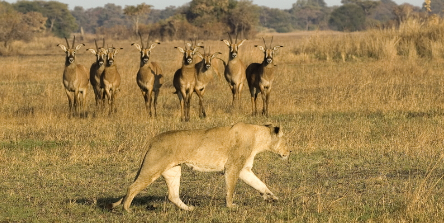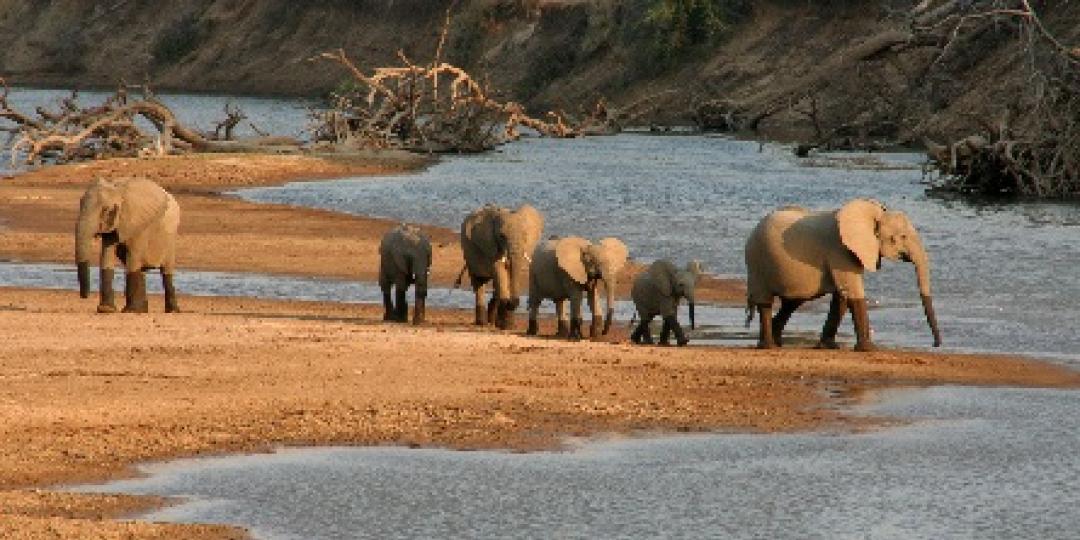Zambia’s untapped potential is considerable, and there is a wealth of tourist-worthy locations that deserve foregrounding to the tourist community.
Among them is North Luangwa National Park, which, according to Katie Dalrymple Hamilton, Head of International Sales at Classic Portfolio, is the best-managed park in the country, thanks to technical and financial support from the Frankfurt Zoological Society.
She says the park is scenically beautiful and hosts the only population of Black rhino in Zambia.

Photo credit: Remote Africa Safaris - Mwaleshi
“Remote Africa Safaris has a camp in the area, Mwaleshi. There are few roads in this remote area and most activities at Mwaleshi are done on foot, following existing animal trails. The camp has four thatched chalets, rebuilt annually of natural materials, and uninterrupted views of the spectacular river – a genuine feeling of solitude and seclusion where life is comfortable yet refreshingly simple,” she says.
For Wilderness Safaris’ Graham Simmonds, South Luangwa National Park offers amazing animal viewing in great accommodation. “However, places like the Kafue National Park and Liuwa Plains are hidden gems,” he says.
The growing popularity of South Luangwa National Park has had spin-off for the gateway town of Chipata, which has expanded significantly in recent years, gaining city status this year. Here Protea Hotels by Marriott runs the Protea Hotel by Marriott Chipata.

According to Mauro Guardigli, Group GM, Protea Hotels by Marriott Zambia, the town is near the Malawian border, making it a good location for travellers en route to the neighbouring country, and dual country visits.
It also offers tourists a number of special experiences, not least that it is the closest town to Mfuwe Gate, the main entrance to South Luangwa National Park, where walking safaris are sought after.
Two important traditional ceremonies occur in the area every year. In February, the Ngoni nation celebrates the Ncwala ceremony, marking the first annual harvests. The Ngoni present fresh fruits to their king, wearing traditional clothing of animal skins, accompanied by spears and shields.
The Chewa people congregate in the area during late August, arriving from within Zambia and from Malawi and Mozambique, to pay homage to their leaders. Dancers enthral the crowds, wearing masks that represent different aspects of human behaviour, some serious and others fun.

Another town with tourist potential is Chingola in Zambia’s Copperbelt, where the Protea Hotel by Marriott Chingola serves both the business and the leisure market. Nearby is the Chimfunshi Wildlife Orphanage, a chimpanzee shelter regularly featured on the National Geographic Channel, and the Nchanga Golf Club.
Tourvest DMC, too, is an enthusiastic supporter of the Zambian pristine wilderness experience. “A sentiment shared by most visitors to the parks – the most notable being Kafue, Lower Zambezi, South Luangwa, Nyika and Liuwa Plains,” says Wanita Bezuidenhout, Business Development and Contracting Specialist, “is that this is the unspoilt Africa they had always imagined it would be.”

Photo credit: Wilderness Safaris
The Lower Zambezi National Park is often combined with Victoria Falls making for a good mix of adventure and classic safari, she says. And although now a well-established destination rather than ‘lesser-known’, Livingstone on the Zambian side of the Falls continues to gain ground as a tourist hotspot.
According to Hans-Peter Merensky, GM at aha The David Livingstone Safari Lodge & Spa, one reason for this is improved road and airport infrastructure.
Furthermore, adventure activities and extreme sports are drawing increasing visitor numbers from around the globe. Rafting, in particular, is popular among a whole spate of adventurous pursuits, and a new attraction is upmarket, multi-day ‘glamping’ trips on the Zambezi River.























